Except for a BIG difference…
While leveled readers are all about predictable text, decodable books contain highly phonetically-decodable text!
*Affiliate Disclosure: Some links lead to Amazon marketplace. As an Amazon associate, I earn from qualifying purchases, at no additional cost to you). This helps keep the information on the blog free and available to everyone.
What are decodable readers/books?
A definition
A decodable reader is a book with text that your child can easily read just by sounding it out (as opposed to guessing words by relying on visual cues or the context).
The text on decodable books is called decodable text.
Decodable books only contain words with patterns, phonics rules or sight words that your child has already been taught.
Therefore, how decodable a book is (or its decodability) is dependent on how well it matches the child’s level of phonics.
You normally start with books that are really simple (from a phonics perspective – lots of CVC and VC words), and, as the level of phonics of the child advances, the decodable readers evolve too, and become more complicated from a phonics perspective.
The major factor that determines the ‘level’ of the decodable books your child should read is in the answer to this question: What is her/his phonics knowledge?
Sometimes decodable books go along a specific phonics program you may be following, sometimes decodable books are sold separately.
Why should you use decodable books?
Apart from being a great tool for practicing phonics and making the rules stick, there’s a sense of real accomplishment when your child is able to read a book by himself/herself!
Your child knows when s/he is really done his/her reading without having to resort to guessing words or looking at pictures!
And that is why children that use decodable books feel so proud of themselves, and usually end up loving reading! This is because there’s normally NO dreading the experience of being confronted with books that contain confusing words they can’t read… No puzzlement because things do not make sense with the rules that they’ve learned so far!
So, there’s LOVE for reading and PRIDE.
However, not all of the decodable books are the same.
Sometimes, they are just a bunch of words put together with no real story line. And children don’t get to love those books as much!
On certain occasions, illustrations can be too distracting…
When looking for decodable books, you want nice and cute pictures, but don’t want them to be so distracting that they take the focus away from READING…
Sometimes the phonics scope in those decodable books doesn’t make too much sense!
This is a comprehensive list of my favorite decodable books!
Decodable Books List!
BOB BOOKS
#1 Bestseller on Amazon for decodable readers!
BOB Books are a classic, but… They surely still work!
These books are especially good for beginner readers/young children learning to read.
Highlights: Clean design, short and simple stories, as well as simple phonics, that advances as your child’s level of phonics does as well.
Even though they are nicely illustrated, pictures are black-and-white (or, well, almost black and white – see picture below) so children do not get distracted and can focus their attention on decoding the words rather than looking at the pictures!
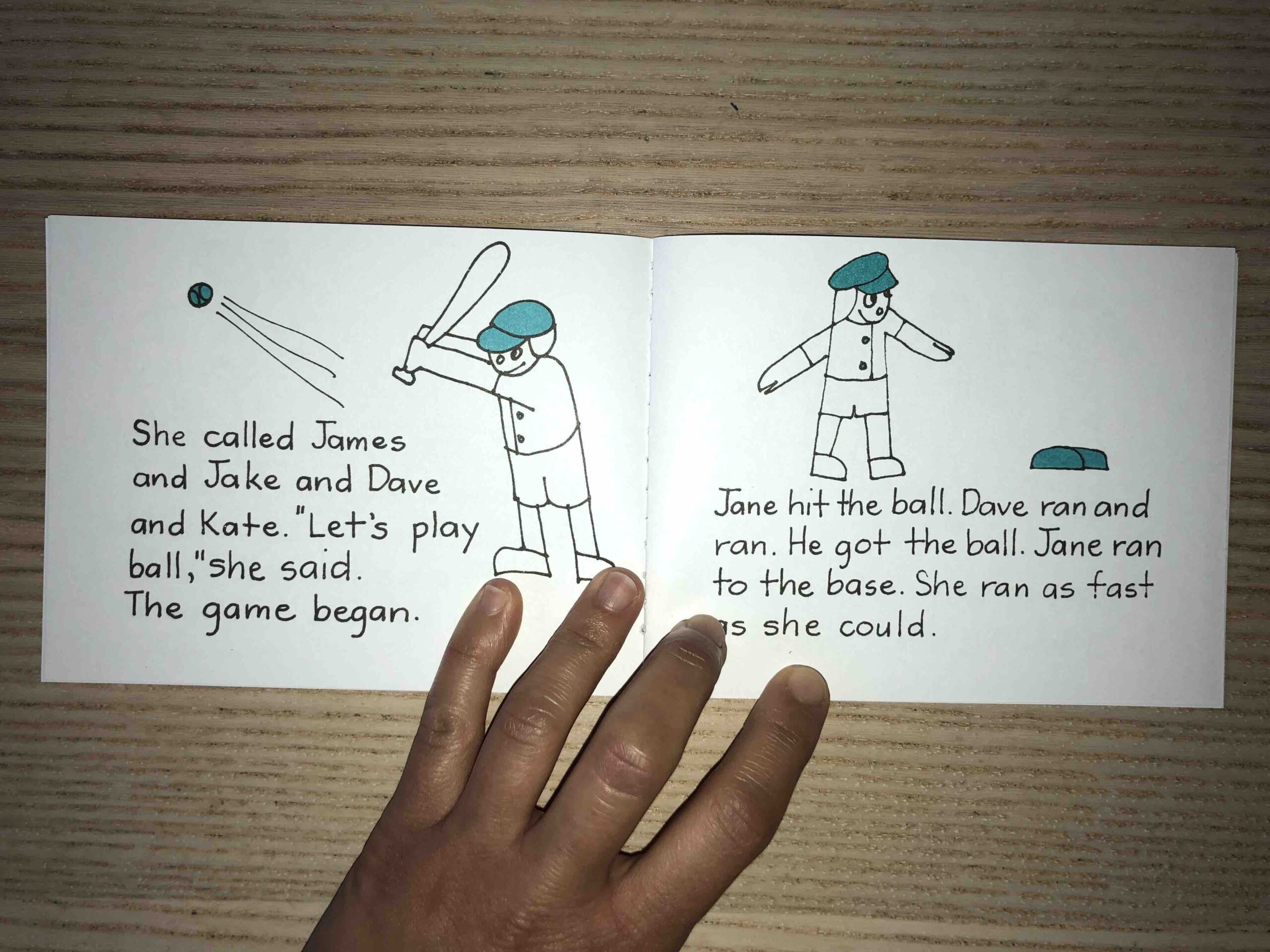
When I was using them, I noticed there was repetition of spelling patterns in the stories and repetition of words, which is fantastic for practicing and making phonics stick!
The BOB Collection is formed by 13 sets of books, divided in 4 stages. These books gradually introduce new sounds, sight words, phonics rules, etc.
Each set focuses on a different topic, such as: pre-reading skills; reading books with only M,A,T, S letters; practicing the alphabet; practicing short vowels; practicing long vowels and more.
Let’s have a close look at the stages and what sets are included in each of them. First stage: Reading Readiness (2 sets: pre-reading skills set and my first bob books set) / Stage 1: Starting to Read (3 sets: set 1 beginning readers, first stories, rhyming words) / Stage 2: Emerging Readers (4 sets: advancing beginners, sight words, animal stories, sight words first grade) / Stage 3: Developer Reader (Words families, complex words, long vowels)
See picture below!

To give you an idea of the scope and how far your child will go, the last stage focuses on teaching long vowels and “the magic e” (silent -e at the end of words).
By the time your child has finished the BOB Books collection, s/he should be able blend sounds fluently and should understand how diphthongs and syllables combinations work.
You can actually find a sounds’ index at the end of the book to see what your child is practicing on each book.
These indexes highlight what new concepts have been introduced in the story.

I like the stories and the illustrations. They are cute and really old-style. Let’s not forget that these books were written and illustrated by a teacher in the seventies, and these books have kept the old days’ spirit up to these days!
You can get started with the BOB books collection with a really young reader (Remember, they even have 2 sets for reading readiness that all about pre-reading skills and the alphabet!) and, by the end of the series your child will be a pretty advanced reader, ready to move on to chapter books.
DOG ON A LOG
I personally LOVE these decodable readers.
When I first got them, I have heard that they were fantastic for students with dyslexia /struggling readers. However, I think that they are great for ANY child learning to read.
The reasons why I think they might be so popular among struggling readers are:
- They feel like “big children’s books” rather than little baby books. Many decodable readers are created with very young readers in mind, which is why they often give off a ‘baby book’ vibe. However, the DOG ON A LOG series goes beyond simple short stories and offers chapter books with well-crafted storylines. These books are not just a random collection of words, but carefully composed narratives.
- From a phonics’ perspective the text is extremely controlled, so students do NOT get stuck a hundred times, feeling overwhelmed or confused by conflicting sounds with similar spelling patterns.
- They use exceptionally big letters.
These books follow a Structured Literacy/Orton-Gillingham-based phonics sequence.
The progression in phonics on the DOG ON O A LOG books is extremely gradual, as mentioned before.

Only one to three new rules are introduced in each step of books. This gives students a lot of practice before they move on to the next step.

I find it fantastic that children are given so many opportunities to practice phonics rules!
These books are on top of my list.
THE YAK PACK
Cute animal characters remain the same throughout the entire collection. These books include comprehension questions and phonemic awareness practice.
These comic book series that are good both for young and older students. The fact that the characters remain the same throughout the entire collection makes the collection very engaging for many children.
The Yak Pack consists of 4 phonics books with around 6 – 7 stories each. Each story targets a different sound in a sequential order.
The YAK PACK collection of books cover short vowels, digraphs, blends and “the bossy e” (a.k.a “the magic e”).
Their phonics books can also be complemented with their sight word stories (5 books), which are more focused on the practice of high-frequency words.



The plot lines and illustrations are really nice! Again, the pictures are black and white to limit distractions when reading.
These decodable readers include reading comprehension questions and phonological awareness practice after each story.
S.P.I.R.E.
Simple (but interesting!) stories, with lovely black and white illustrations.
These high-quality readers were created as part of the SPIRE program, an intensive / multi-sensory reading program.
However, you can use them separately to reinforce your child’s reading instruction.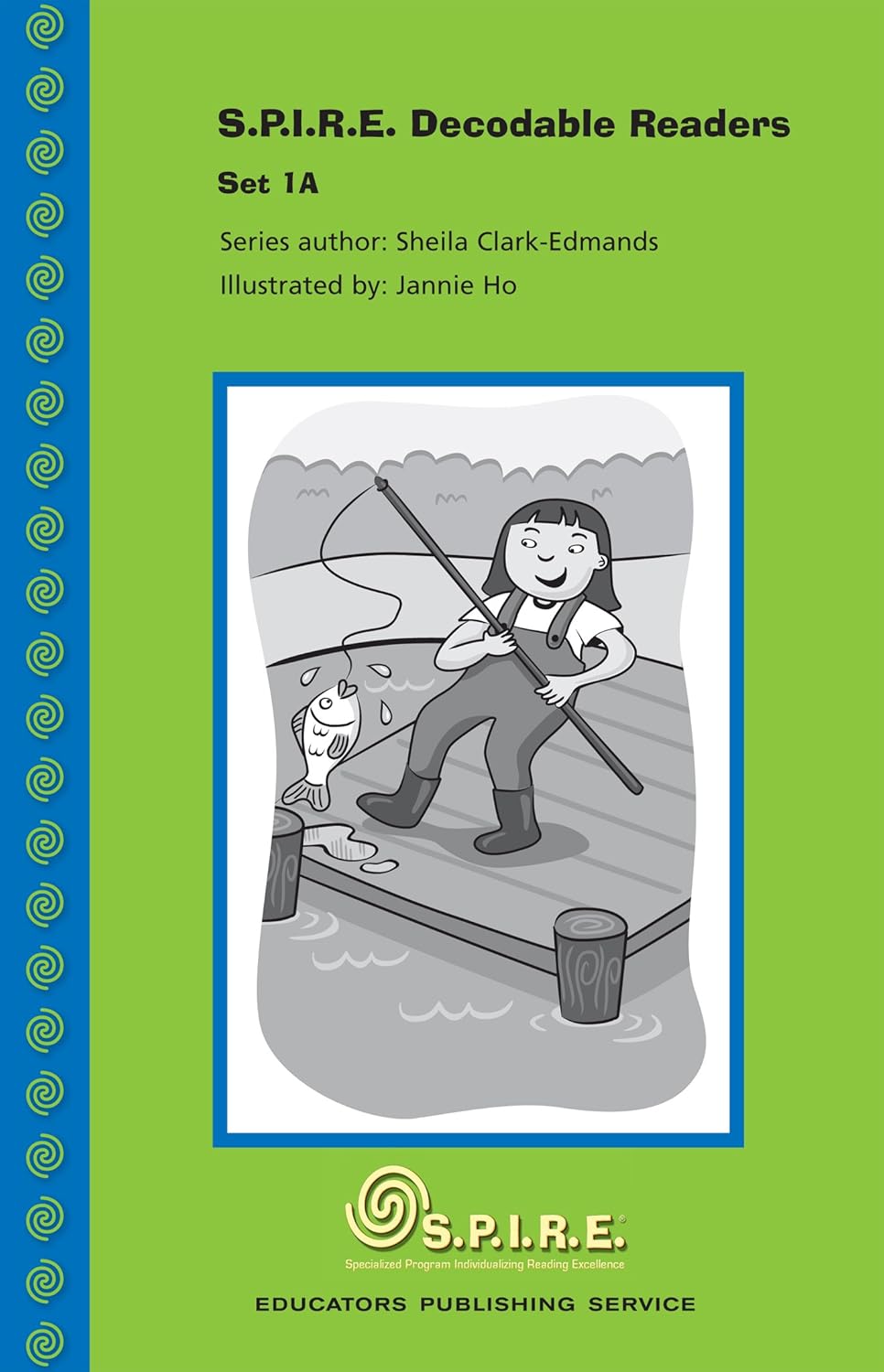
These readers go gradually and slowly, giving your child the opportunity to practice phonics rules and really master them before he/she moves on to the next level.
The S.P.I.R.E. collection contains 120 decodable books, distributed across 6 levels.
They cover not only fiction, but also heaps of other topics, such us science or social studies.
Very complete sequence, that goes all the way up to even more complex phonics rules, such us -able words, open syllables, -age words…
Primary Phonics
Another solid option!
Once more, Primary Phonics readers offer lots of practice before moving on to the next set of rules! That is their approach from the very beginning!
In fact, each book incorporates the phonics rules (for instance, vowel patterns) introduced in the preceding book, which is fantastic for enhancing and consolidating phonics knowledge.
The sequence is really well-thought-out.
The collection includes 6 sets of phonics books with 10 story books each.
These phonics books could accompany the Primary Phonics Workbooks if you wanted to, as they follow the same sequence. However, this is not necessary. You can just get the readers if you want to use a different curriculum or if you don’t even need one!
Some parents find the stories too simple (and sort of stilted), but, in general, they are engaging enough for young students.
The real purpose of these decodable books is for children to develop strong phonics skills, and they are remarkably good at that.
Primary Phonics books on Amazon!
Hot Chips, Mad Fish, and Other Tales
Five Orton-Gilligham-based stories, all in one book.
Funny and easily-decodable stories, with witty illustrations.
This graphic novel uses mainly CVC words (consonant/vowel/consonant), which is one of the first skills taught in the Orton-Gillingham approach to teaching reading.

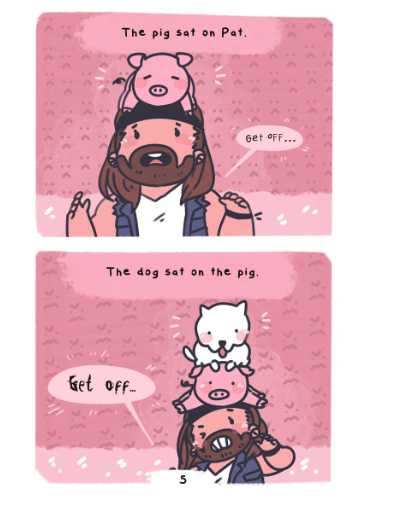
This book is becoming quite popular among older struggling readers as they don’t perceive it as “baby books.”
It helps children boost their confidence and attitude towards reading. In that regard, it could be a valuable addition to your library if you have second-grade students who still need to work on their blending skills but feel embarrassed to read decodable books that have a ‘baby feel’ to them.
Children also seem to find the stories and the illustrations engaging… and hilarious!
Starfall Short-Vowel Pals 16 Decodable Phonics Books
The Starfall Learn-to-Read Book Set (16 books) is another choice you may want to consider for beginning readers.
However, please keep in mind that these books may progress at a faster pace than necessary for children who are just starting out.
Before making a purchase, it might be helpful to closely examine how well your curriculum aligns with the scope and sequence of these books, or consider using them for review purposes at a later stage. While they focus on short vowel sounds, many of the stories include words with blends. Occasionally, the text introduces digraphs also, which may not be ideal for early phonics learners.
Other than that, the characters and stories are engaging and entertaining, making reading an enjoyable experience for children. Besides, they include repetition in a way that helps build up fluency.
The set is also very reasonably priced.
Rex Runs Off
The Rex books series were written with struggling 2nd-6th graders in mind. These kids probably can’t still read proper chapter books and need further practice using controlled text.
The entire series (5 books) is written at the same level, equivalent to the end of Step 1 in Wilson Reading, which is an intervention Orton-Gillingham-based program.
Before getting started with these series children should have been introduced to: consonants, short vowels, digraphs (ch/sh/th/wh/ck), two and three-sound words, the “-s” suffix, the possessive s, contractions (don’t/doesn’t, etc.), multi-syllable words (with in-text aid in the books).
Although the scope stays the same throughout the entire series, the word count increases with each book.
Some high-frequency words are also included in the books, which are listed at the beginning of each book.

The author has done a great job at making the text sound natural while including lots of CVC words, creating interesting stories and down-to-earth characters.
Also, there are some helpful notes to help struggling readers even further with “tricky” words (see example below).
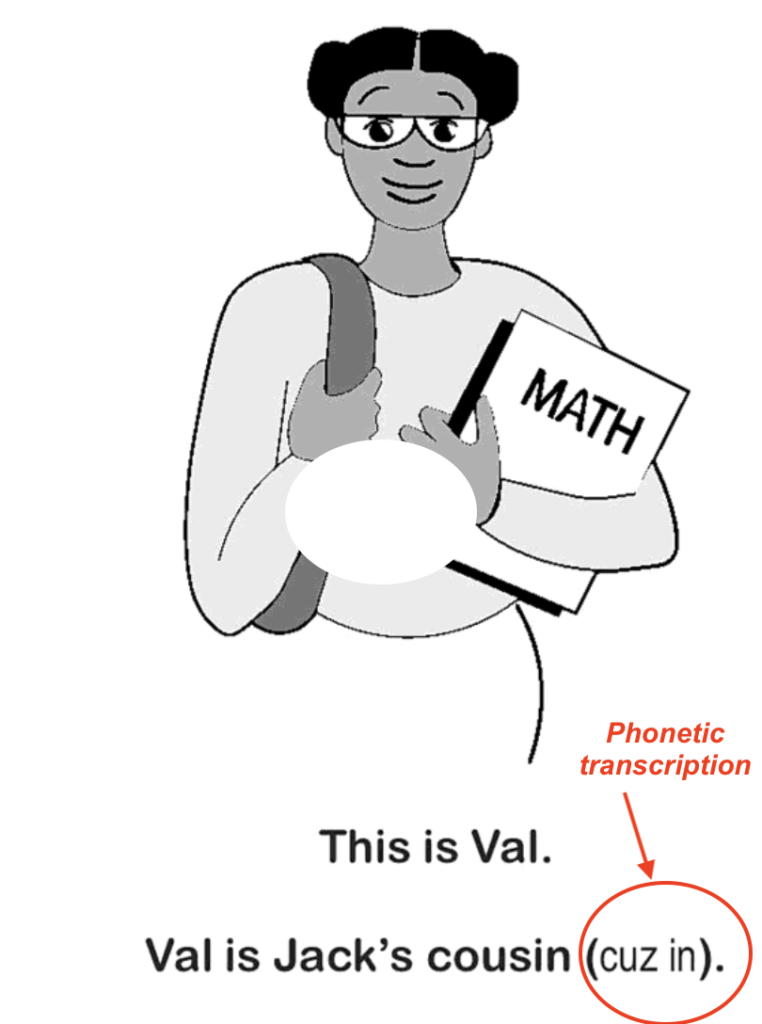
Express Readers
Another solid option!
High-quality decodable readers, but only start with the “I am Ready” set (first one on the series) once your child has learned the most common sound for each letter of the alphabet and you feel he/she is ready to read CVC words.
In other words, it is assumed that your child already knows all these letter sounds, and the focus is on putting their blending skills into practice.
These books use extraordinarily big letters, which I noticed works very well with beginning readers. Additionally, the illustrations are cute and filled with animal characters.
The text and illustrations are placed on separate pages, which allows children focus on the letters rather than being distracted by the pictures when reading.

The pages themselves are of very good quality, making them great for frequent use. They are likely to withstand heavy use and remain in good condition over time.
“Sticky words” (that’s the name given to irregular high-frequency words) are introduced gradually. To give you an idea of what to expect, in the “I am Ready” set, which consists of six books, the following irregular high-frequency words are introduced: a, the, to, was, is, go, from, to, too.
Each reader specifies the sight words that will be introduced at the beginning.

The complete set comprises 7 steps (6 – 15 books in each step) and takes your child from reading CVC words to vowel teams, silent letters, and compound words. It offers a comprehensive progression of skills.

Jolly Phonics Readers
Readers that go along the Jolly Phonics program. However, they can be used all by themselves. I’ve heard very good things of them, but, as I have mentioned before, I haven’t personally used them!
Dr Maggie’s Readers
Miss Rhonda Readers
I also LOVE when learn-to-read programs include stories, readers, and decodable texts…
Here is an example from Hooked on Phonics! These readers from Hooked on Phonics are in line with the phonics rules that are introduced in the program.
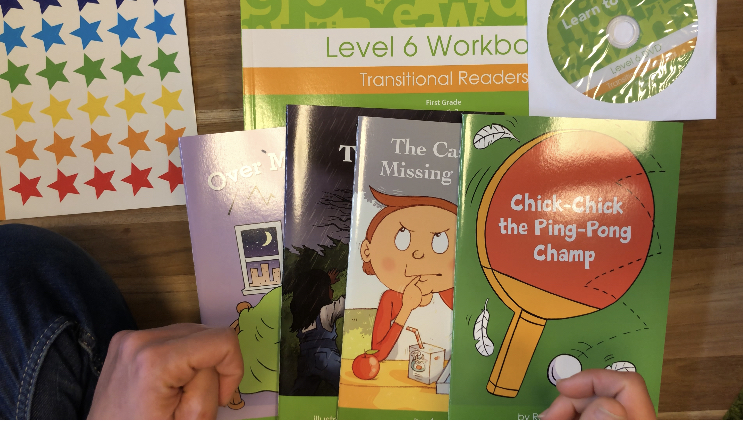
Other high-quality learn-to-read programs with decodable readers are All About Reading and Logic of English.
By the way, if you want to learn more about these literacy programs, I recommend you check this article out!
Other readers you may have heard of (as they are extremely popular), but I personally haven’t loved…
You can still go for them – I just haven’t got to love them for the reasons you’ll find out below!
My First Readers Phonics collection, by Scholastic
I love the stories and the illustrations. However, I must say that these readers move fast. In 24 little readers you cover a lot!
They begin really simple, but they start to get complicated really soon, and do not give children enough practice before moving on the next thing.
I am not a huge fan of their scope either (the order in which phonics rules and sight words are introduced).
So, if I just had to buy one set I wouldn’t personally use these readers. Especially if you have a beginner reader, these books won’t give him/her the practice that is really needed to build up his/her phonics foundation.
They could be, however, used in combination with other readers, because, on the other hand, the illustrations and stories are very nice.
Pete the cat
Even if they claim to be “phonics books”, the text is plagued with too many sight words. The choice of words is pretty poor for the purpose of learning to read! Instead of picking simple CVC words, so children can put their blending skills to practice, they use other words that are way too advanced for beginner readers (words like oranges, sandwiches, banana, for instance) Quite a strange choice of words!
Despite their flaws, the stories in these books are engaging, and children may enjoy them as short bedtime stories. But that in mind! Do not use them as a tool for effective reading instruction with emerging readers.
How long does my child need to be on decodable books for?
One last thing that I wanted to say is that you don’t need to stay forever on decodable readers.
Once your child has a strong phonics foundation, then s/he can transition into normal books.
These are the clues you are looking for to know if it’s time to transition into “normal” books:
- Your child has ended the series of the decodable books he/she has been following
- You notice he/she is fluent and has gained confidence
- You are confident that he/she is sounding out words rather than guessing when confronted with new words!

Hey there! I’m Laura – an author, YouTuber, blogger, and the creator of the “Learning Reading Hub” platform. I created this space to dive into the world of reading instruction and to shout from the rooftops about how vital it is to use the right methods for teaching reading. I’ve got a TEYL certification (Teaching English to Young Learners), plus a Journalism degree from the University of Navarra in Spain, along with a Master’s Degree in Communication.
I’ve always loved digging into research, jotting down my thoughts, connecting with people, and sharing what makes me tick. With a background in marketing, digital projects, and the education scene (especially language learning), I’m all about wearing different hats.
When my first kid needed to learn how to read, it opened my eyes to the challenges and complexities involved. This journey took me through a rollercoaster of self-teaching, eye-opening discoveries, and yeah, some letdowns too. There’s so much conflicting info out there, along with methods that just don’t cut it. And let’s face it, these issues are way too common.
Now, I’m all about channeling that passion (without sounding like a know-it-all!) and sharing my journey. My mission? Making it easier for those who are on the same path I once was.
My heart’s with my family and the amazing Learning Reading Hub project. I live with my husband and two little ones, raising them in a bi-lingual environment (English and Spanish).




One reply on “The Best Decodable Books – Your Go-To List of Decodable Readers!”
[…] By the way, if you are interested in a comprehensive list of good-quality decodable readers, check this other article on the blog! […]